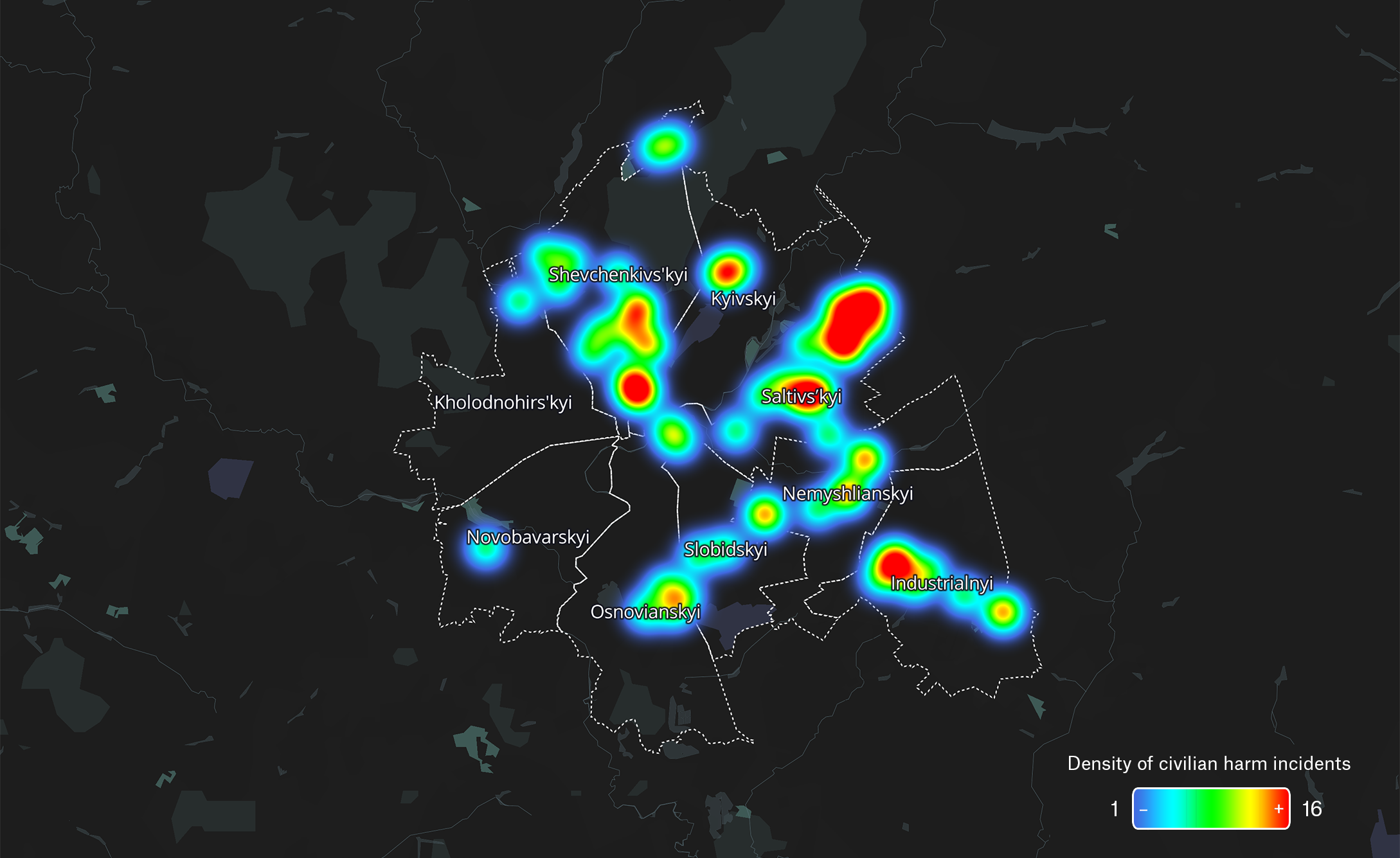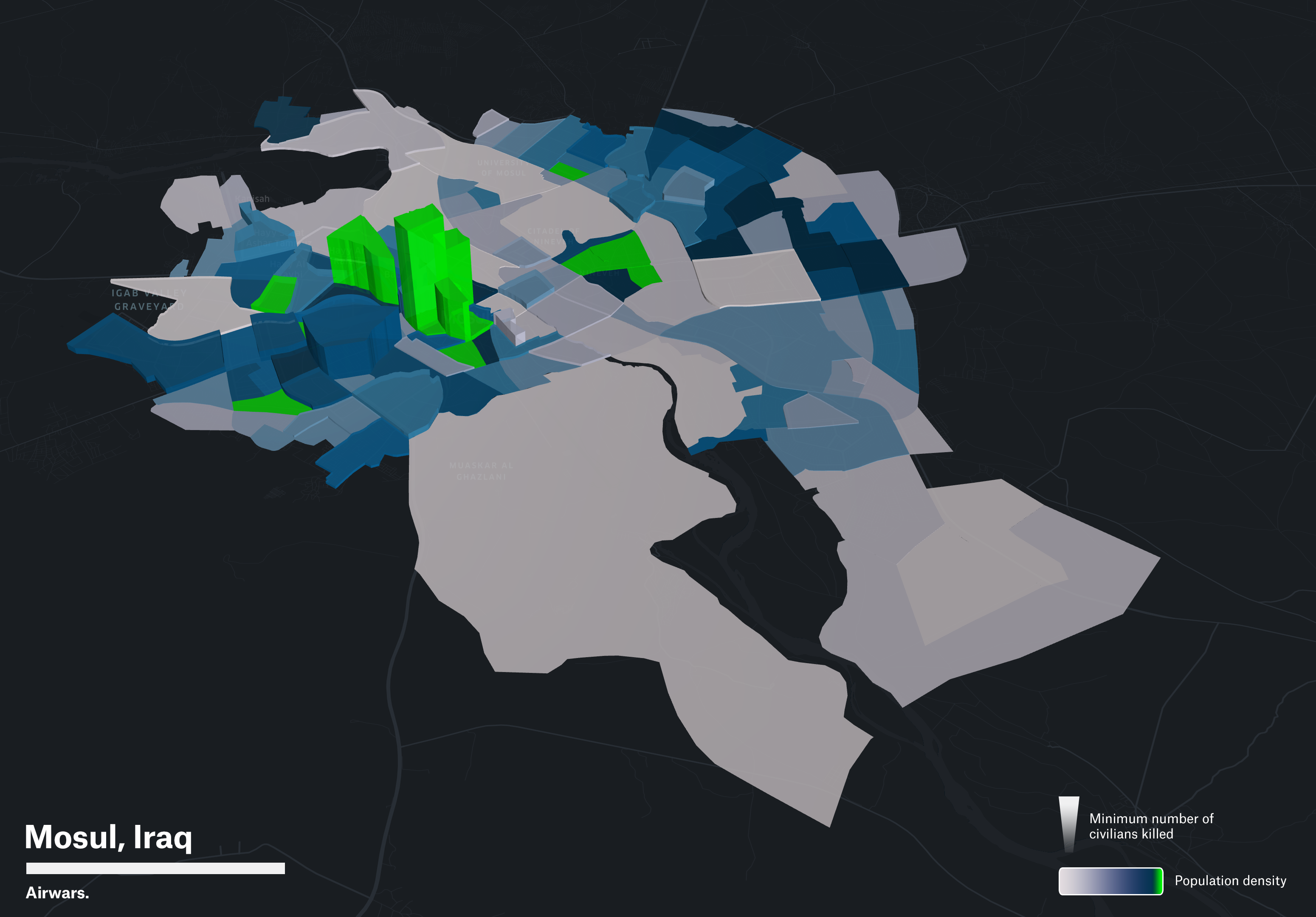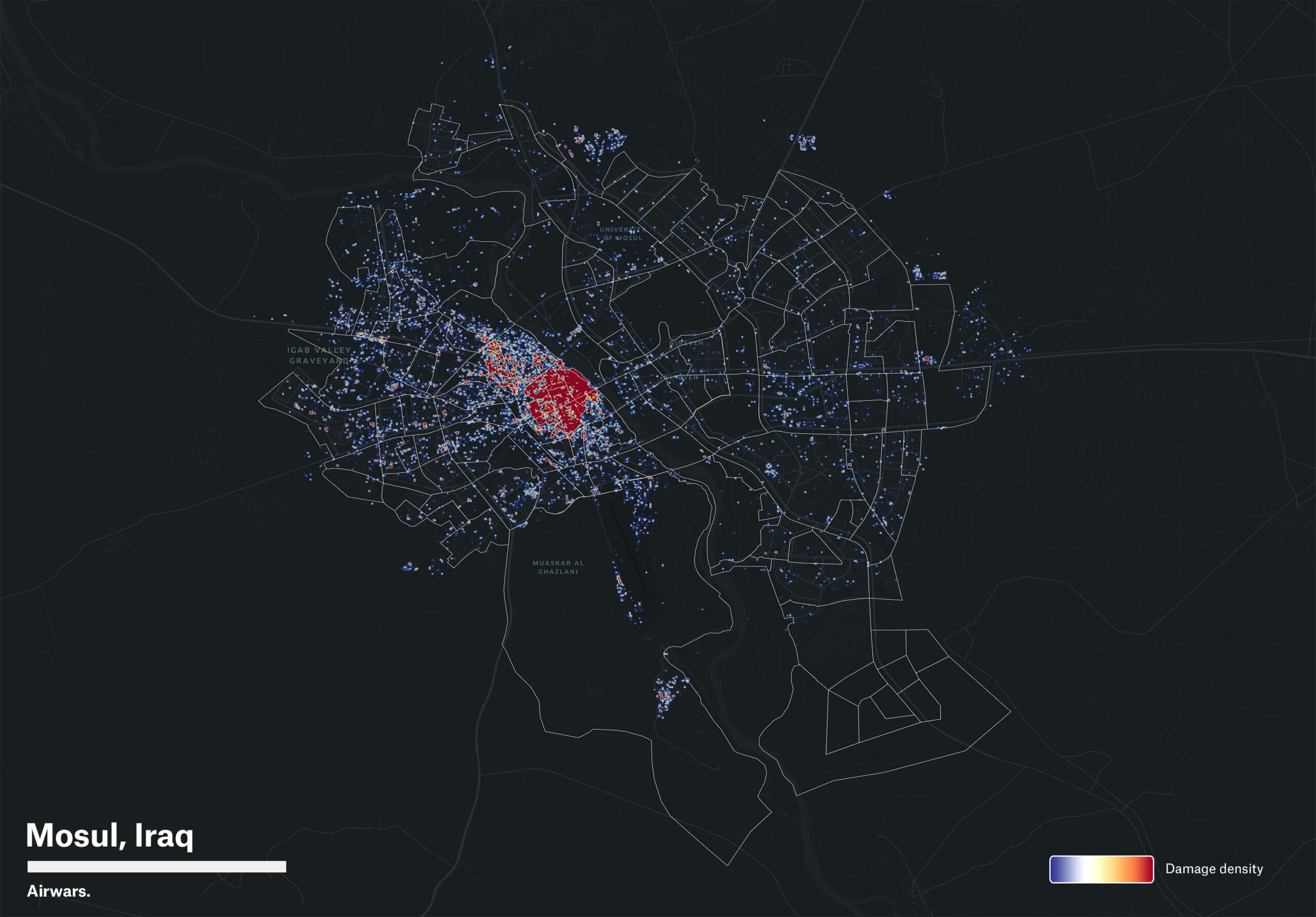Overview
This overview is intended to accompany the publication of our incidents of civilian harm related to the use of explosive weapons in the Gaza Strip since October 7, 2023.
Airwars applies the same general methodology to all conflicts monitored, which is available on our website here. This methodology has been assessed as highly conformant with Every Casualty’s Standards for Casualty Recording.
This methodology note explains in detail how we are applying our standard approach to monitoring civilian harm incidents in Gaza from explosive weapons use. Additional methodology notes will be released tailored to each other monitoring area, such as civilian harm in Israel from the actions of Hamas militants.
Read more about our casualty recording work
In June 2023, at the Human Rights Council’s 53rd session, the Office of the High Commissioner for Human Rights (OHCHR) presented its report on the impact of casualty recording on the promotion and protection of human rights, which included a number of references to Airwars’ casualty recording efforts.
Our work has also been researched by academics at the University of Sydney, Heather Ford and Michael Richardson, in their paper: Framing data witnessing: Airwars and the production of authority in conflict monitoring. You can read an executive summary of their findings here.
Dataset overview
All incidents are an aggregate of all open source accounts alleging civilian harm occurred in a particular moment in space and time. We consider our incidents as ‘live’, and should be updated over time to account for new information that may come to light, or may not have been identified by Airwars during the original research.
Defining an incident
Airwars uses an incident-based approach to document harm to civilians from explosive weapons use: each incident is defined as a moment in time and space where sources alleged that an explosive weapon led to the fatality or injury of civilians. We are also capturing shooting incidents and ground operations where we can, though our main focus is on explosive weapons. This does not include incidents where only militants were killed or injured, however we do capture the details of militants killed or injured in events alongside civilians.
Airwars assumes civilian status unless otherwise specified. Any ambiguity on civilian status is captured within our casualty and belligerent ranges (see below).
Where the exact time of an incident is unknown, deaths and injuries may be aggregated under one event until more information comes to light.
Each incident is geolocated to the highest possible degree of accuracy by trained geolocation teams. Airwars additionally cross-checks existing geolocation efforts from the wider open source community, and includes credit to such work where applicable. Airwars also encourages feedback from open source experts on each assessment, and incorporates updates and feedback where possible.
Where locations cannot be identified, incidents will be aggregated until more information is known.
Source identification
As an all source aggregate, Airwars treats all sources as relevant to an incident depending on their proximity to the harm event and the level of detail available about the event. Airwars includes all sources regardless of political or ideological affiliation. Inclusion of sources in the archive should not be taken as an endorsement of the source.
All our sources for harm events in Gaza are identified by our trained team of Arabic-language researchers; we primarily identify sources in the language local to the area where the harm has occurred. Additional English-language sources are added depending on their relevance to the harm event. As we also evolve our focus to harm events reported by Hebrew-language resources, we will also mobilise our Hebrew language teams and apply the same local-language led approach.
All information is assessed, written up and archived within each assessment in order to allow users to conduct further investigation.
As we also work to identify attribution of harm, names of victims and victims demographics where known, we are reconciling names and other information published by official channels, such as the Palestinian Ministry of Health, with our incidents.
Information categorisation
Attribution
Strike status (while we use the term ‘strike’ here, this should also be taken to mean any action involving the use of an explosive weapon, including, for example, a VBIED). All incidents are cross-checked with official statements from the Israel Defense Forces, militant wings of Hamas and other Palestinian military groups, and are included as follows:
Declared: The declared strike classification applies to incidents in which a belligerent has accepted responsibility explicitly for carrying out a strike on a specific location or specific target. This includes any statement made by an official from the Israeli government or from official channels or websites linked to Palestinian militant groups (Palestinian Islamic Jihad, Hamas).
Likely: The likely strike classification applies to incidents in which at least two or more sources that reported on the incident explicitly attributed the strikes to a belligerent. In Gaza, Airwars’ Arabic-language researchers take typical local references and language used to describe Israel Defense Forces to identify local attribution, as the term ‘Israeli state’ is rarely explicitly referenced.
Contested: The contested strike classification includes incidents in which attribution of the strike to one belligerent was not agreed upon by all sources reporting on the incident, specifically when sources attribute a strike to both Palestinian forces (Palestinian Islamic Jihad, Hamas) and Israeli forces. Incidents where no sources attribute a strike and the resulting civilian harm to a specific belligerent are graded as contested until more information comes to light.
Single source claims: only one source was found with an explicit allegation of harm from a belligerent.
Civilian harm status
Confirmed: A specific belligerent has accepted responsibility for the killing or injuring of non-combatants or allied forces in a particular incident.
Fair: Where, in the view of Airwars, there is a reasonable level of public reporting of an alleged civilian casualty incident from two or more sources which includes attribution to a specific belligerent. In the context of reporting in the Gaza Strip, Airwars has found that explicit attribution to Israeli forces is rare, and instead is assumed by sources given the intensity of bombardment. Incidents are therefore assessed as ‘fair’ if at least one source mentions a belligerent in a credible harm incident. Incidents will be updated to reflect alternative attribution should that come to light at a later stage. In our ‘strike status’ category, as mentioned above, we will still refer to incidents with only one source explicitly attributing the harm to a belligerent as ‘single source claims’ to reflect the information environment.
Weak: These are presently claims seen by Airwars as ‘place-holder’ incidents until more information comes to light, given a lack of corroborating sources on either civilian harm or likely belligerent.
Contested: These occur where there are competing claims of responsibility within the sources: for example, sources may both attribute the harm to misfire from a Hamas rocket, or to an Israeli airstrike. There may also be inconclusive evidence supporting attribution to both belligerents, for example competing interpretations of munition fragments or blast impacts.
Discounted: This criteria is often applied to incidents that may have at first fallen into one of the above categories, but new information came to light since publication that suggests the original source material was incorrect. For example, more information may come to light about the identities of victims initially classified as civilians, that strongly suggests such individuals were combatants. Airwars researchers judge this information objectively and on a case by case basis.
Casualty ranges
As with all assessments, Airwars presents casualty figures recorded in an incident within a range.
All assessments include a minimum and maximum for both civilians and, if applicable, militants (‘belligerents’) injured and killed, taking the most recent figure from unique sources. For example, a source may initially say five civilians were killed. As more information on the incident becomes available, the same source may then say that the number rose to 10. In this case we would take the ‘10’ as this reflects the source’s updated understanding of events.
In the assessment summary, an explanation is offered as to the rationale behind the casualty range.
In cases where civilian status is contested, Airwars applies the minimum casualty range ‘0’ to both the civilian casualty field and to the belligerent field.
Information related to missing individuals, or civilians buried under the rubble following an attack is recorded in Airwars’ summary. The number of missing individuals would only be added to our death toll ranges if sources specified that those civilians have been killed. When new information comes to light regarding the fate of these victims, we would update the assessment accordingly, as well as our ranges.
Images and media referenced
As we are uploading images at pace for this project, all images have been automatically blurred to warn for graphic content given the high volume of graphic material. Less graphic images will be unblurred in due course.
Please also note that we include all images related to the sources identified, which can include images of militants.
All images are used under fair use as archival material. If you would like us to take down any images, please contact us at the info email listed below, using the subject line ‘Image use’.
Identification of victims
Airwars is also matching names of civilians identified through open source investigation with official names and IDs released by the Palestinian Ministry of Health where possible. As in other conflicts monitored, Airwars also records incidents of civilian harm where not all victims were named by sources, or where sources did not provide the victim’s full family name.
Impact
Airwars is tracking the reported impact of the use of explosive weapons on services or infrastructure relating to education, health or food supply. See below for more details on what is being included in each category:
-
Education – Reported damage or destruction to education infrastructure (school, university, etc.) and/or injured or killed education staff
Health – Reported damage or destruction to healthcare infrastructure or vehicles (ambulance, hospital, clinic, etc.), and/or healthcare staff (doctors, nurses, rescuers, etc.), killed or injured
Food – reported damage or destruction to food infrastructure (food markets, agricultural land, food factory, water infrastructure, etc.) or machinery (tractor, etc.), and/or injured or killed civilians working in the food or agricultural sector, and/or livestock killed or injured
Updating our assessments
If you have lost loved ones in an incident listed on the Airwars site and would like to get in touch – or would like to ask us to remove a photo or to add another – then please also contact us at the info email listed below.
Errors and corrections
We strive for accuracy and transparency of process in our reporting and presentation. Our casualty monitoring is continually evolving, representing our best current understanding of any alleged incidents.
If you have new information about a particular event, or details we haven’t included; if you find an error in our work; or if you have concerns about the way we are reporting our data, then do please reach us at the info email listed below with the subject line ‘Assessment update’.
Contact: info [at] airwars [dot] org



